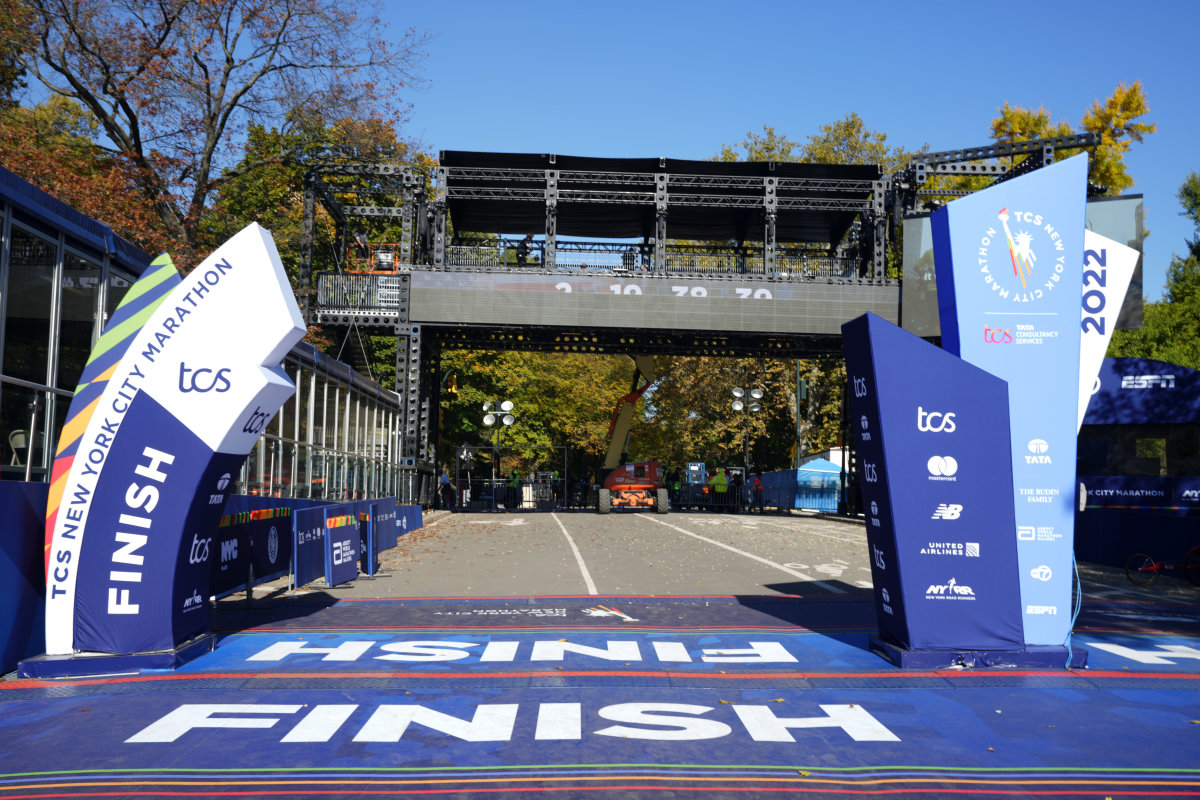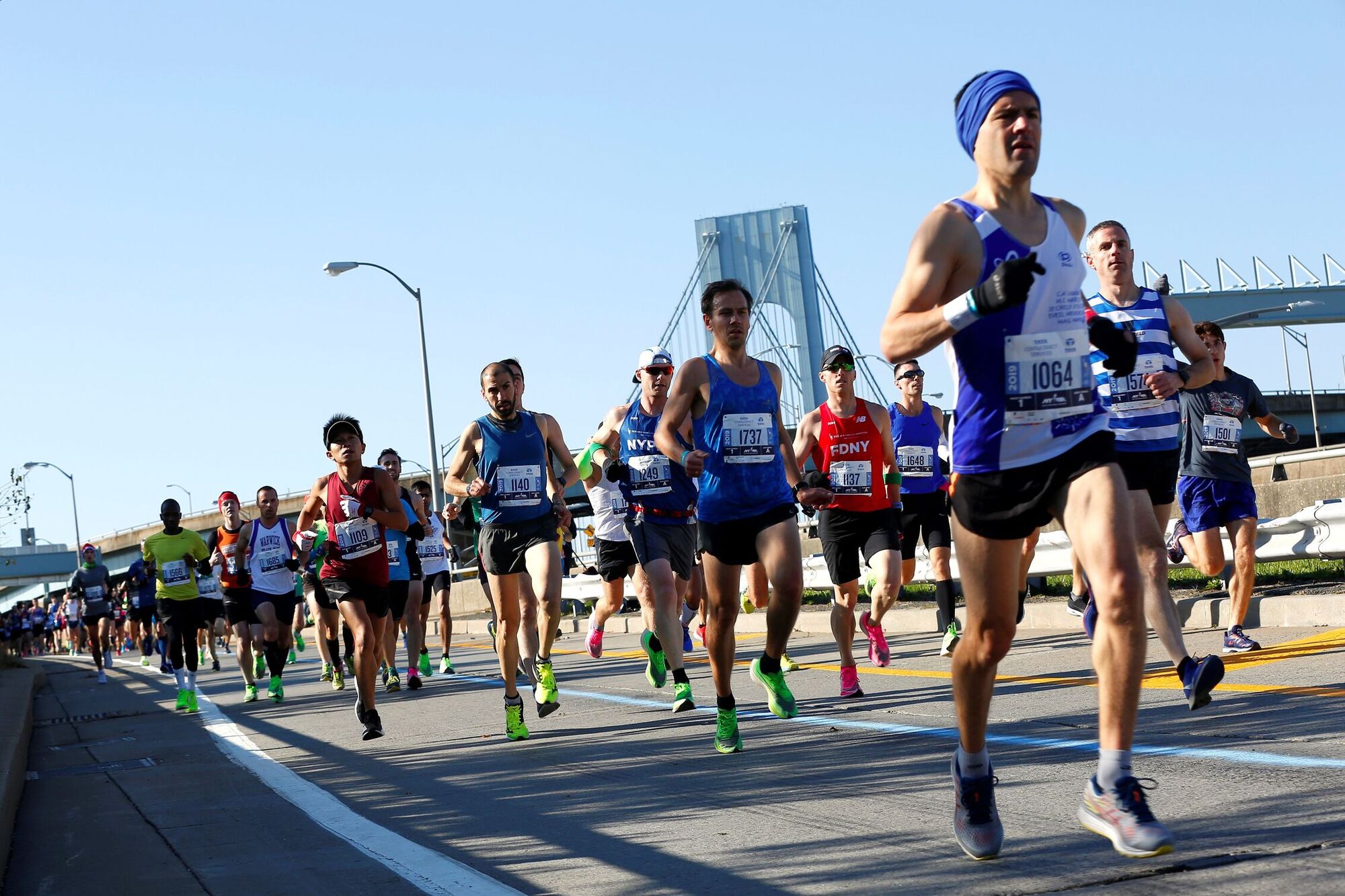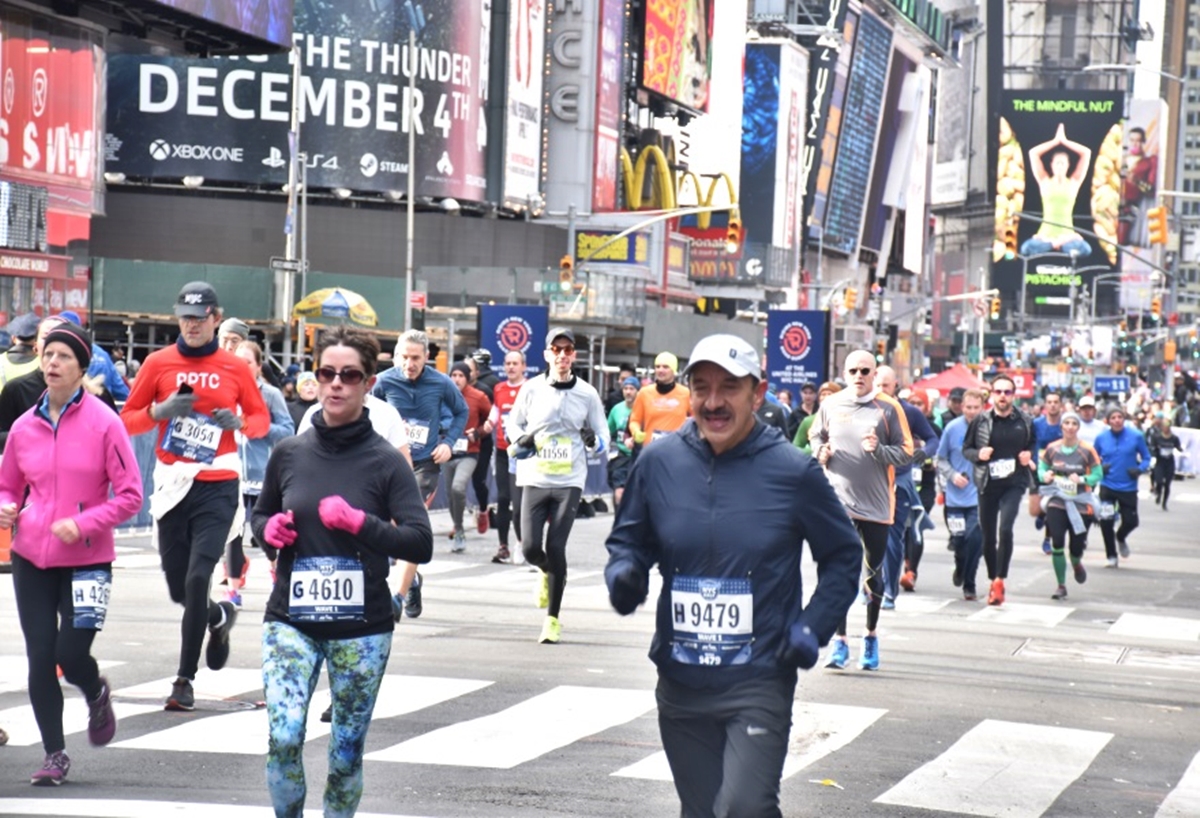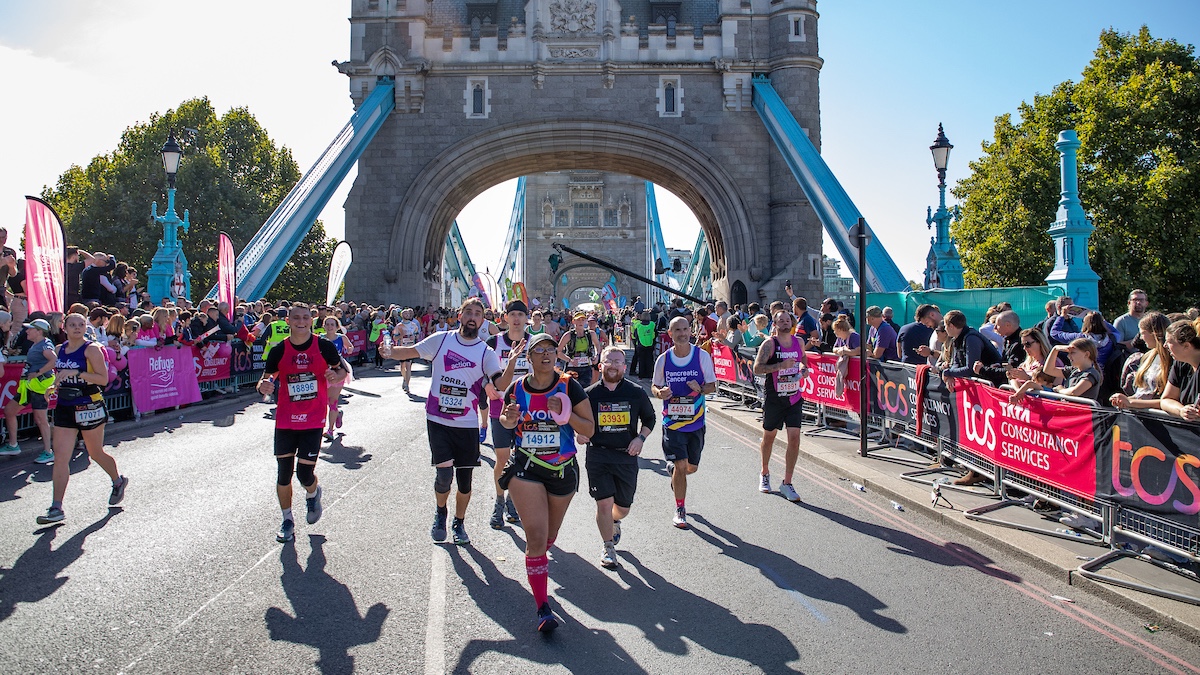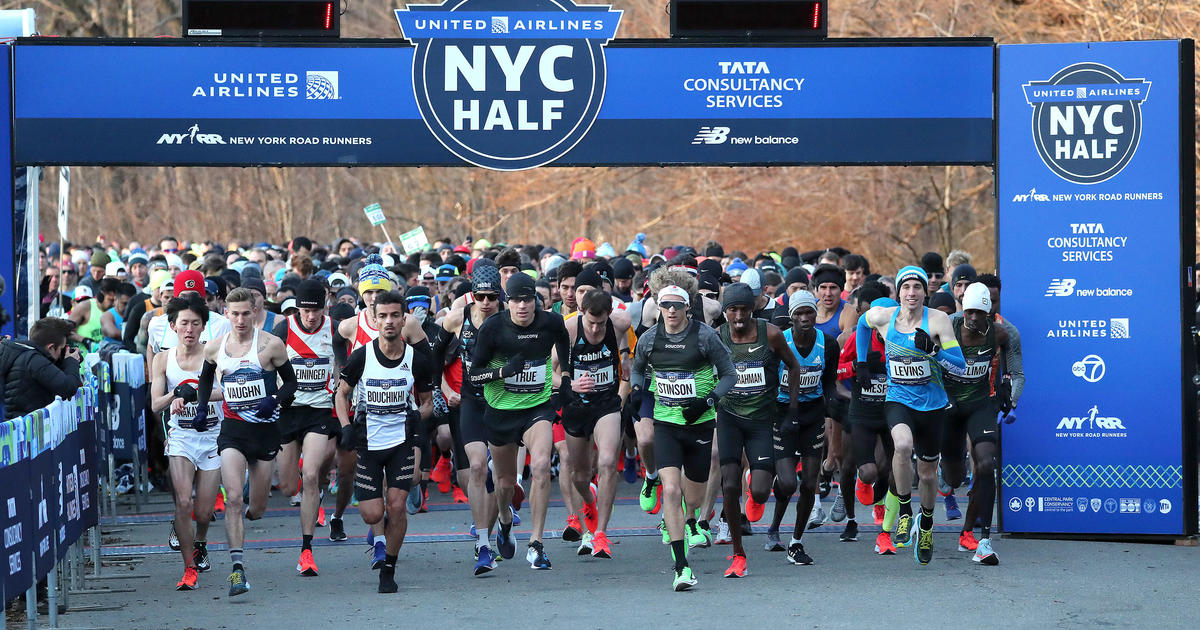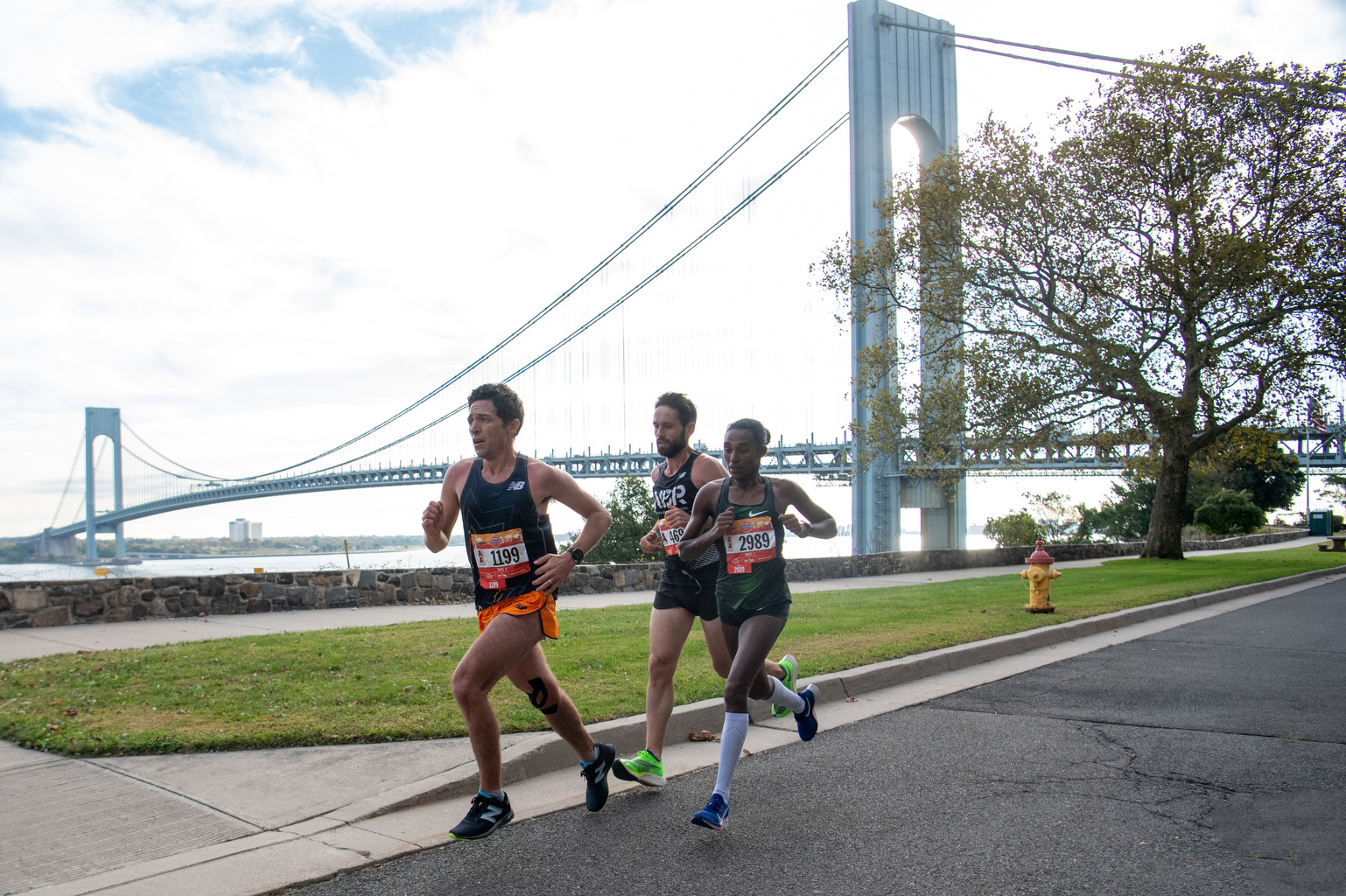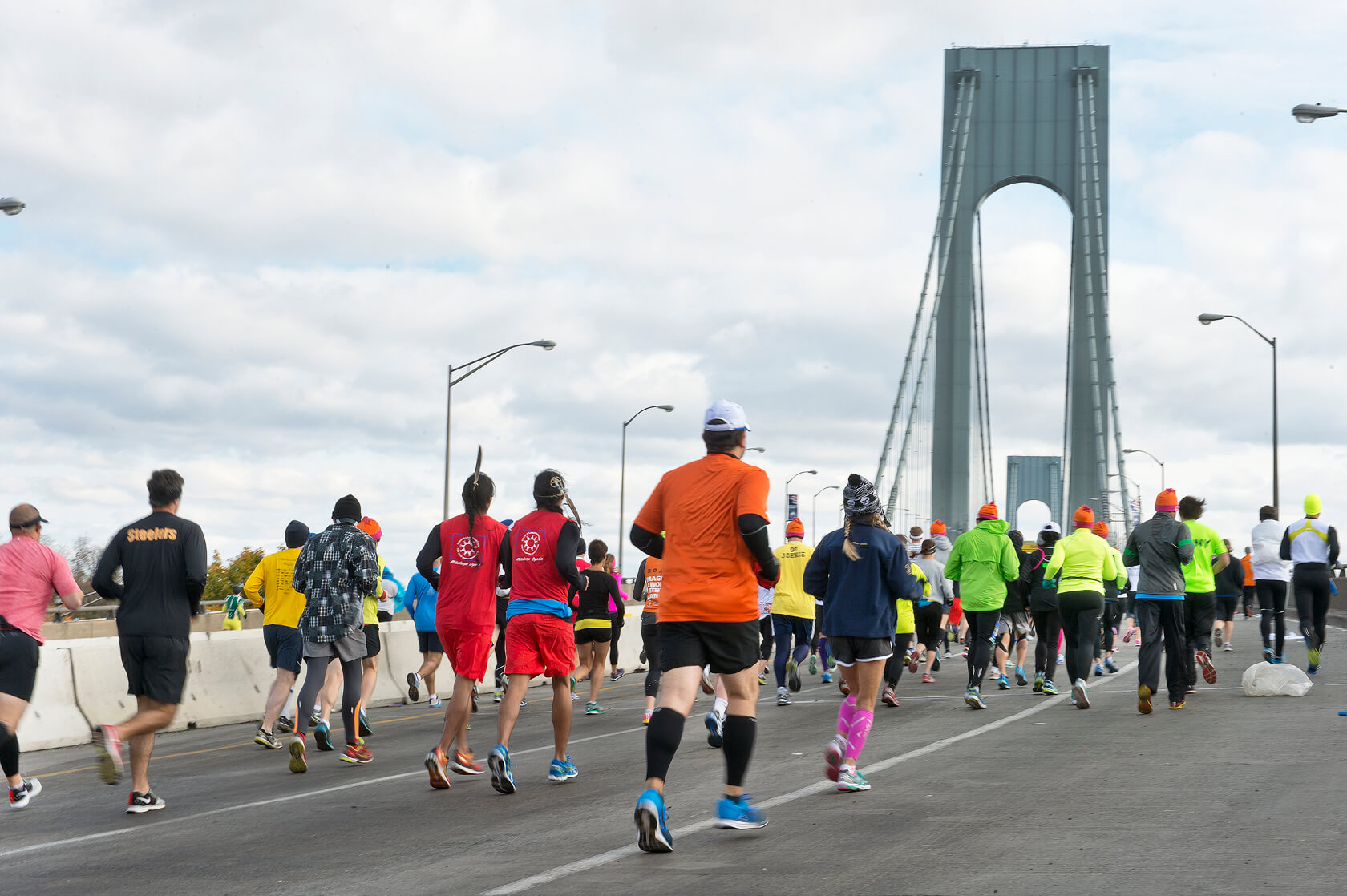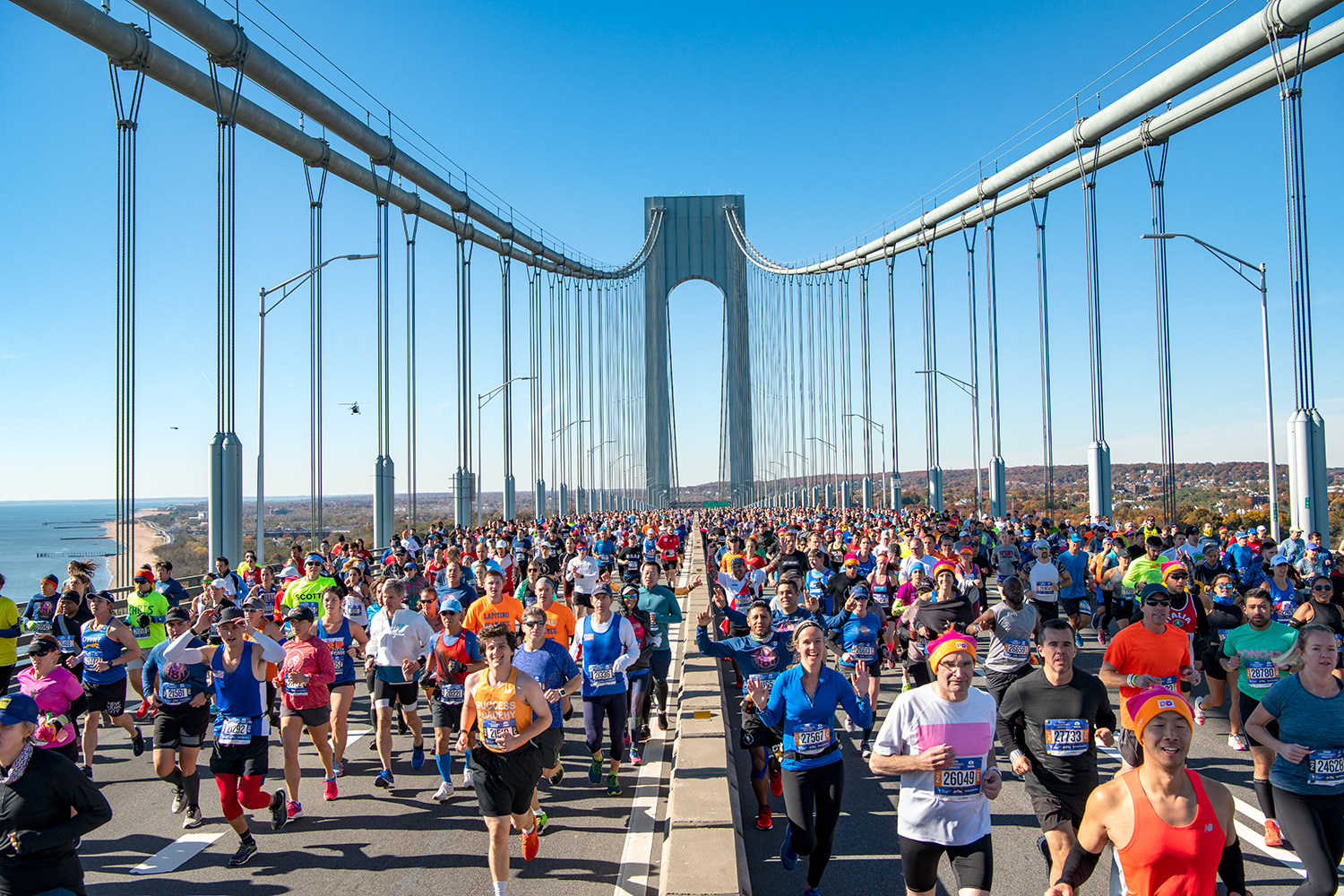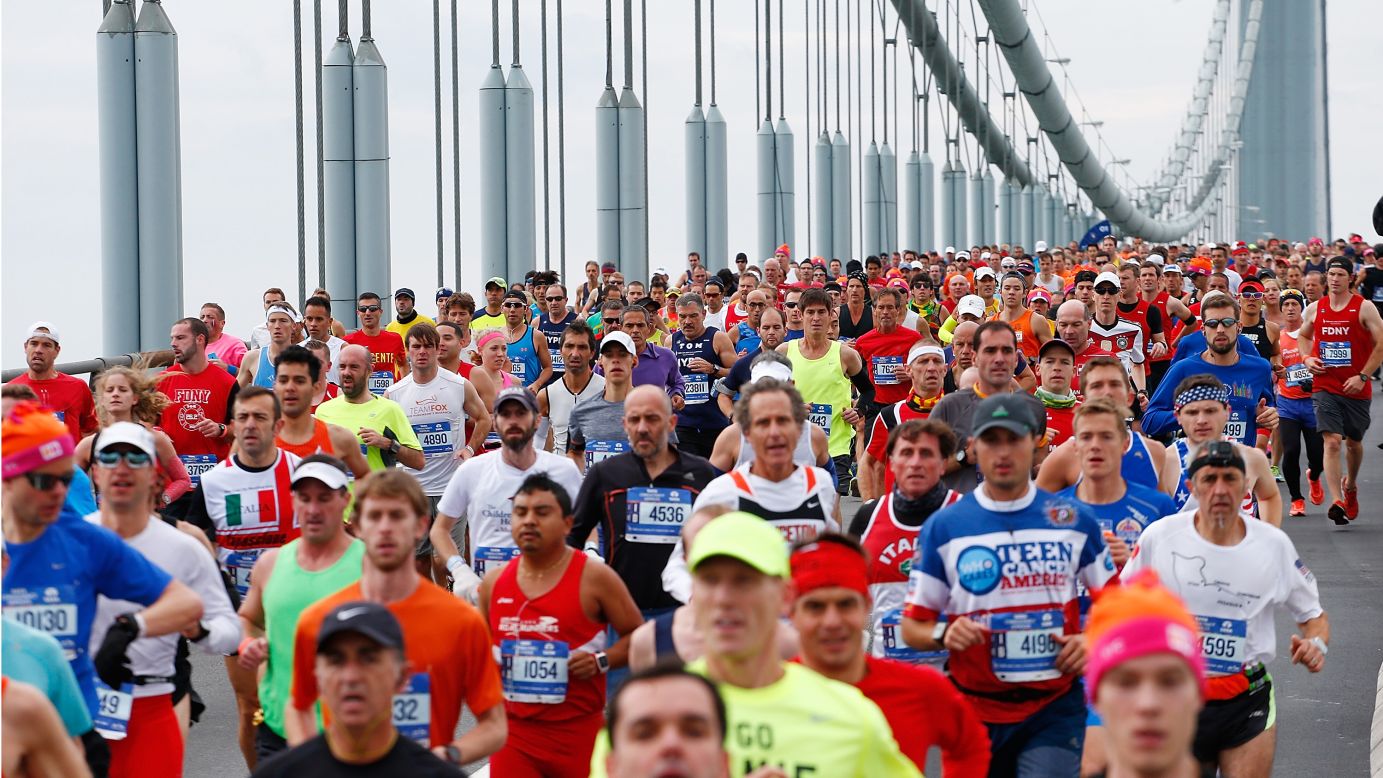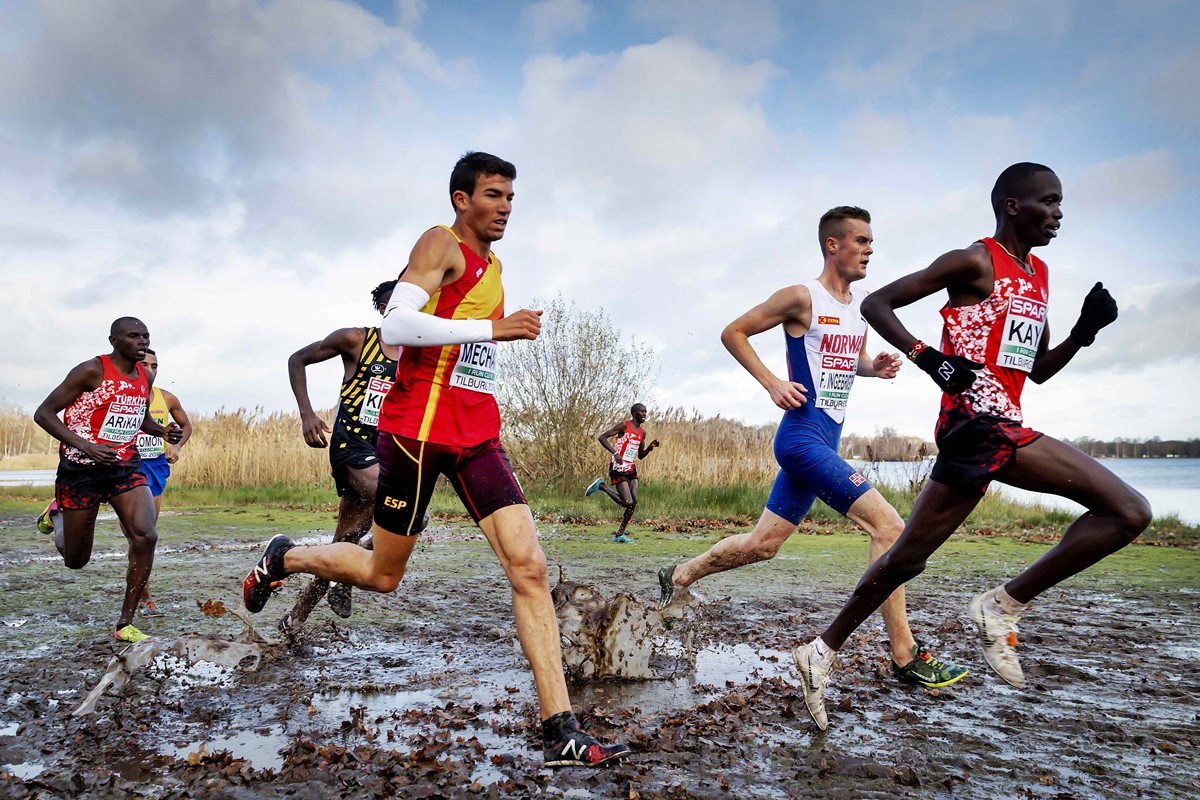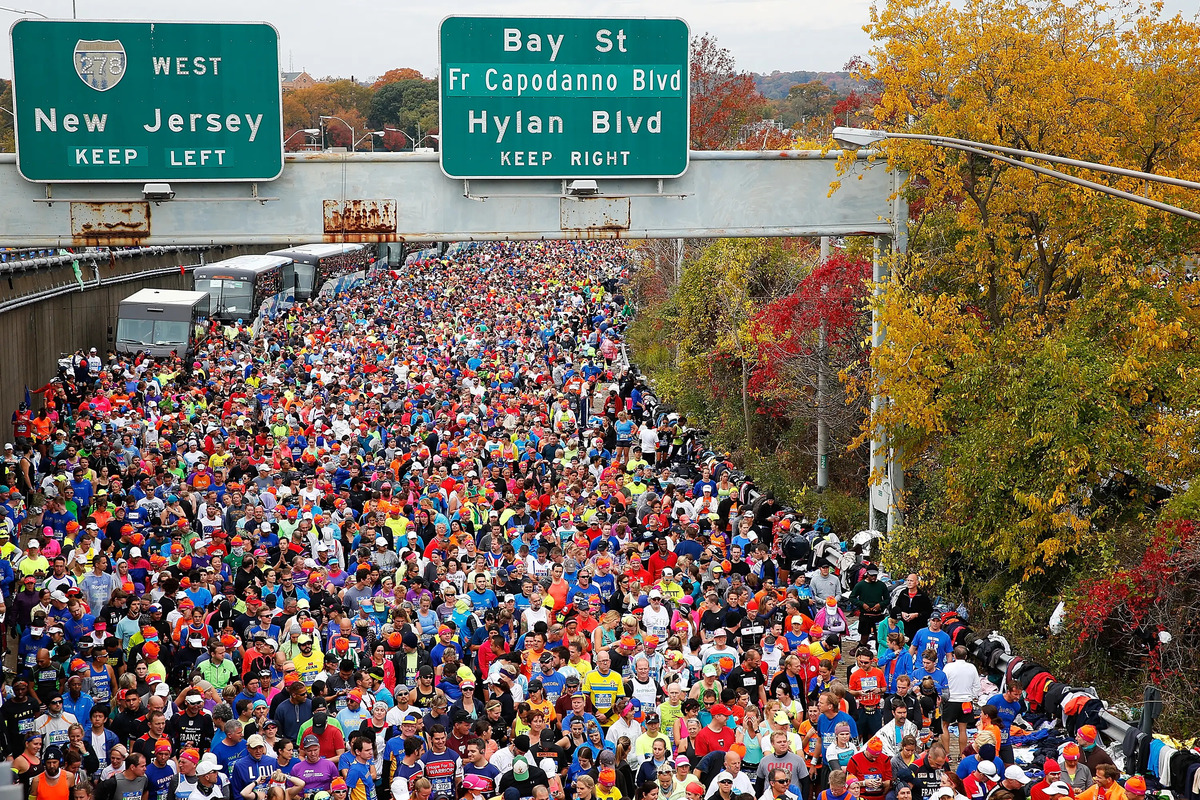

Featured
When Is The New York Marathon 2016
Modified: January 2, 2024
Get all the details about the highly anticipated New York Marathon 2016, including dates, route information, and featured athletes. Don't miss out on this exciting event!
Introduction
Welcome to the world-renowned New York Marathon! Every year, thousands of runners from all over the globe lace up their running shoes, testing their endurance and pushing their limits on the vibrant streets of the Big Apple. In this iconic event, participants not only challenge themselves physically, but also experience the electric atmosphere and the unbeatable sense of accomplishment that comes with crossing the finish line.
The New York Marathon, also known as the TCS New York City Marathon, is one of the most prestigious and popular marathons in the world. Established in 1970, this annual event attracts runners of all levels, from elite athletes to first-time marathoners, as they strive to conquer the 26.2-mile (42.195 km) course.
This marathon is not just a race; it’s a celebration of human determination, unity, and community. With its remarkable course that winds through the city’s five boroughs – Staten Island, Brooklyn, Queens, the Bronx, and Manhattan – participants not only experience the thrill of running alongside fellow athletes, but also get to witness the diverse neighborhoods and iconic landmarks along the way.
From the enthusiastic cheers of the spectators lining the streets, offering their unwavering support, to the camaraderie felt among the runners, the New York Marathon is an event that captures the spirit of unity and showcases the vibrant energy of the city that never sleeps.
Whether you are a seasoned runner looking for a new challenge or a passionate spectator cheering on friends and loved ones, the New York Marathon is an event like no other. So, get ready to be inspired, to persevere, and to be part of a truly unforgettable experience. In the sections below, we will explore the history of the New York Marathon, the details of the course, the registration process, training tips, event schedule, race day logistics, spectator information, and charity opportunities. Let’s dive in!
History of the New York Marathon
The New York Marathon has a rich history that spans over five decades. The inaugural race took place on September 13, 1970, with only 127 participants running multiple loops of Central Park. Since then, it has grown exponentially in size and popularity, becoming one of the most prestigious marathons in the world.
Over the years, the New York Marathon has witnessed remarkable moments and records. In 1976, the event gained international attention when American runner Fred Lebow organized it into a five-borough race, extending the course to cover the diverse neighborhoods of New York City. That year also saw the participation of legendary marathoner Grete Waitz, who won the first of her nine New York Marathon titles.
In 1994, the New York Marathon made history by becoming the largest marathon in the world, with over 30,000 runners crossing the finish line. The event continued to break records, both in terms of participation and performance. Notably, in 2001, the legendary Ethiopian runner, Tesfaye Jifar, set a new course record of 2 hours 7 minutes 43 seconds.
Throughout its history, the New York Marathon has embraced diversity and inclusivity. In 1975, the official wheelchair race was introduced, pioneering the integration of athletes with disabilities into mainstream marathons. This groundbreaking move paved the way for other marathons to follow suit and prioritize accessibility.
Each year, elite runners from around the world gather to compete for the top honors at the New York Marathon. The marathon has also become a platform for charitable organizations to raise funds and awareness for various causes. Countless inspiring stories of personal triumph, perseverance, and philanthropy have emerged from this iconic race, making it a symbol of hope and determination.
Today, the New York Marathon continues to captivate the world with its electrifying atmosphere and unmatched spirit. It attracts over 50,000 participants from all walks of life, representing more than 125 countries. From the spirited cheers of spectators to the iconic sight of runners crossing the finish line in Central Park, the New York Marathon stands as a testament to the enduring power of the human spirit.
Course Description
The course of the New York Marathon is as iconic and diverse as the city itself. Spanning across the five boroughs of New York City – Staten Island, Brooklyn, Queens, the Bronx, and Manhattan – it provides a unique and unforgettable experience for participants.
The race begins on Staten Island, with runners gathering at the Verrazano-Narrows Bridge. As the starting cannon fires, the athletes embark on their journey, crossing the bridge and soaking in stunning views of the New York Harbor. The initial stretch on the bridge sets the tone for the challenging yet exhilarating course that lies ahead.
After descending the bridge, runners enter Brooklyn, where they are greeted by enthusiastic crowds lining the streets. The energy of the neighborhoods is infectious as spectators cheer and offer support to the participants. The course takes runners past iconic landmarks such as the Brooklyn Academy of Music and the Williamsburg and Greenpoint neighborhoods.
From Brooklyn, the race continues into Queens, where the atmosphere only intensifies. Participants run through Long Island City, passing by the famous Pepsi-Cola sign and taking in breathtaking views of the Manhattan skyline. The community spirit of Queens is evident as locals come out to cheer and encourage runners.
Next, the course brings runners into the Bronx, where they experience a change of scenery enriched with vibrant culture and lively crowds. The stretch through the Bronx provides runners with a boost of energy as they are cheered on by passionate spectators and live music.
The final leg of the New York Marathon takes participants back into Manhattan, where they truly feel the heart and soul of the city. The course weaves through several iconic locations, including Central Park South, where the energy reaches a crescendo, pushing runners forward. As participants approach the grand finale, they enter Central Park, where the roar of the crowd and the beauty of the surroundings create a truly awe-inspiring experience.
With the finish line in sight, runners push through the last stretch, crossing the line triumphantly in Central Park. The sense of accomplishment that floods over each participant is truly indescribable, a culmination of months of training and unwavering determination.
The course of the New York Marathon is not only physically demanding, but also provides participants with a unique opportunity to explore the vibrant and diverse neighborhoods of New York City. It encompasses the rich cultural fabric of the city, making this marathon a truly unforgettable experience.
Registration Process
Participating in the New York Marathon requires a registration process that ensures a fair and organized event for all participants. The registration period typically opens several months in advance, but due to the high demand, entry spots can fill up quickly. Here’s a breakdown of the registration process:
- Eligibility: To register for the New York Marathon, participants must meet certain requirements. Typically, runners must be at least 18 years old on race day. However, there are also options for younger participants through the Rising New York Road Runners program. Additionally, participants must meet the time qualifications set by the New York Road Runners (NYRR) to ensure a safe and enjoyable race experience.
- Entry Methods: The New York Marathon offers different entry methods to accommodate a diverse range of participants. One of the most common ways to secure a spot is through the general entry drawing. During the registration period, interested runners can enter their names into the lottery for a chance to secure a spot in the race. The lottery selection process takes place after the registration window closes, and winning entrants are notified via email.
- Guaranteed Entry: In addition to the general entry drawing, there are several ways to gain guaranteed entry to the New York Marathon. These include qualifying times from previous races, running for an official charity partner, being affiliated with an international tour operator, or participating through the 9+1 program offered by NYRR. Each of these methods has specific criteria and requirements, so participants should carefully review the eligibility details outlined by the race organizers.
- Registration Fee: The New York Marathon requires a registration fee for all participants. The fee amount varies depending on factors such as entry method and residency. Fees are non-refundable and non-transferable, so participants should ensure their availability and eligibility before registering.
- Confirmation and Race Materials: Once registered, participants will receive a confirmation email verifying their entry. Closer to the race date, runners will also be provided with detailed information regarding bib pickup, starting wave assignments, and other race-related logistics. Participants are required to pick up their race materials in person and should bring the necessary identification and documents as specified by the race organizers.
It’s important to stay updated with the official New York Marathon website and follow their social media channels for the most accurate and up-to-date information regarding the registration process. The New York Marathon is a highly sought-after event, so it’s crucial to plan ahead and be prepared for the registration period to secure a spot in this iconic race.
Training Tips
Preparing for the New York Marathon requires dedication, consistency, and a well-structured training plan. Here are some training tips to help you get ready for this challenging yet rewarding race:
- Set Realistic Goals: Before you begin your training, it’s essential to set realistic goals based on your current fitness level and experience as a runner. Assess your strengths and weaknesses, and aim to improve gradually.
- Build a Training Schedule: Create a training schedule that includes a mix of endurance runs, speed work, and recovery days. Gradually increase your mileage and include long runs to build stamina. Consistency is key, so stick to your schedule as much as possible.
- Mix Up Your Training: Incorporate different types of workouts and training methods to keep things interesting and challenging. Incorporate interval training, hill repeats, tempo runs, and cross-training activities like cycling or swimming to improve overall strength and fitness.
- Optimize Cross-Training: Cross-training can help prevent injuries and give your body a break from running. Incorporate activities like yoga, strength training, or Pilates to improve flexibility, strengthen muscles, and prevent muscle imbalances.
- Get Proper Nutrition and Hydration: Fueling your body with the right nutrients is essential for optimal performance. Prioritize a balanced diet with plenty of fruits, vegetables, lean proteins, and whole grains. Stay well-hydrated before, during, and after your runs to maintain energy levels and aid in recovery.
- Listen to Your Body: Pay attention to any signs of fatigue or pain during your training. Rest when needed and don’t push yourself beyond your limits. It’s better to take a day off and recover properly than risk an injury that could hinder your progress.
- Train on Similar Terrain: If possible, include training runs on terrain similar to the New York Marathon course. Incorporate hill training to prepare for the bridge crossings and simulate the race conditions as much as possible.
- Join a Running Group or Find a Training Partner: Training with others can provide motivation, support, and accountability. Consider joining a local running group or finding a training partner who can help you stay motivated and push you to achieve your goals.
- Take Care of Your Mental Health: Long-distance training can be physically and mentally demanding. Make sure to prioritize self-care and manage stress levels. Incorporate relaxation techniques, such as meditation or deep breathing exercises, into your routine.
Remember, training for a marathon requires time and patience. Be consistent, stay motivated, and listen to your body throughout the process. By following these tips and putting in the hard work, you’ll be well-prepared to conquer the New York Marathon and achieve your running goals.
Event Schedule
The New York Marathon is not just a race; it’s a week-long celebration of running, community, and the indomitable spirit of the participants. Here’s a breakdown of the event schedule to help you plan your experience:
- Week Leading Up to the Race: The excitement starts building in the week leading up to the New York Marathon. There are various events and activities for participants and spectators, including the TCS New York City Marathon Expo. This expo showcases the latest trends in running gear, nutrition, and sports technology, and is a must-visit for all participants.
- Opening Ceremony: The New York Marathon kicks off with a grand Opening Ceremony, typically held a day or two before the race. This ceremony features performances, special guest appearances, and the official lighting of the Empire State Building in the colors of the marathon.
- Marathon Eve Dinner: On the evening before the race, participants have the opportunity to attend the Marathon Eve Dinner. This event is a festive gathering where runners can enjoy a delicious meal, connect with fellow participants, and soak in the pre-race atmosphere.
- Race Day: The main event, the New York Marathon, takes place on a Sunday in early November. The race has a staggered start, with different waves of runners beginning at designated times. The exact start time varies each year but is typically in the morning. Participants are advised to arrive well in advance to ensure a smooth start to their race day.
- Post-Race Festivities: As participants cross the finish line in Central Park, they are greeted with a sense of accomplishment and jubilation. After collecting their finisher medals and recovery provisions, runners can enjoy the post-race festivities. This includes live music, entertainment, and the opportunity to reconnect with family, friends, and fellow runners.
- Awards Ceremony: Later on race day, the Awards Ceremony takes place to honor and celebrate the top finishers in various categories. This ceremony recognizes the remarkable achievements of elite runners, age group winners, and wheelchair participants. It is a chance to reflect on the incredible performances of these athletes.
- Post-Race Celebrations: Throughout the week following the marathon, participants and their supporters can enjoy various festivities and events across the city. These may include celebratory parties, charity gatherings, and special promotions from local businesses. It’s a time to revel in the accomplishments and bask in the glory of completing the New York Marathon.
It’s important to stay updated with the official New York Marathon website and related communications for the most accurate and up-to-date information regarding the event schedule. Get ready to immerse yourself in the excitement and camaraderie of this world-class marathon.
Race Day Logistics
On the day of the New York Marathon, careful planning and preparation are key to ensuring a smooth and enjoyable experience. Here are some important race day logistics to keep in mind:
- Arrival and Transportation: Plan to arrive at the race start area well in advance to allow time for parking, security checks, and any additional logistics. Be sure to check the official race website for specific instructions and recommendations regarding transportation options, road closures, and public transportation availability.
- Baggage and Gear Check: The New York Marathon offers a baggage and gear check service for participants. This allows you to securely check in your belongings before the race and retrieve them at the designated area after you finish. Ensure that you follow the guidelines provided by the race organizers regarding bag size and contents.
- Starting Wave and Corral Assignments: Participants are assigned to specific starting waves and corrals based on their projected finish times and qualifying standards. Review your assigned wave and corral and plan your warm-up routine accordingly. Make sure to arrive at your designated corral on time to avoid missing your start.
- Hydration and Fueling: There are multiple aid stations strategically placed along the course, providing water, electrolyte drinks, and energy gels. Familiarize yourself with the locations of these aid stations in advance and plan your hydration and fueling strategy accordingly. Consider carrying your own water bottle or hydration pack for convenience.
- Spectator Viewing Areas: If you have friends or family members supporting you on race day, there are several designated spectator viewing areas along the course where they can cheer you on. Communicate with your supporters in advance, sharing the specific locations and estimated times when you will pass through these areas.
- Course Support: The New York Marathon ensures the safety and well-being of participants by providing course support. There will be medical stations, portable toilets, and volunteers along the course to assist with any needs or emergencies. If you require medical attention or assistance during the race, seek help from these designated areas.
- Post-Race Reunion Area: After crossing the finish line and collecting your medal, it’s common for participants to arrange a designated post-race reunion area to meet up with friends, family, or running groups. Decide on a specific location in advance to avoid confusion in the crowded finish area.
- Official Race Photos: Professional photographers will be stationed along the course and at the finish line to capture memorable moments of your race. Take note of their locations and smile for the cameras to preserve the memories of your New York Marathon experience.
It’s crucial to carefully review all the race day logistics provided by the official New York Marathon website and race organizers. By familiarizing yourself with the details, planning ahead, and staying organized, you can fully immerse yourself in the incredible atmosphere of race day and focus on achieving your personal goals.
Spectator Information
The New York Marathon is not only an exciting event for the participants but also for the spectators. If you plan on cheering on your friends, family, or loved ones as they tackle this challenging race, here’s some important information to enhance your spectator experience:
- Choose Your Spectator Locations: Research the race course and choose strategic locations where you can catch multiple glimpses of the runners. Popular spectator spots include the start area on Staten Island, the Verrazano-Narrows Bridge, Brooklyn’s Fourth Avenue, Queensboro Bridge, and Central Park. Be sure to check the official race website for the best viewing areas and recommended spectator routes.
- Arrive Early: Plan to arrive at your chosen viewing area well in advance to secure a good spot. Keep in mind that popular spots can get crowded, so arriving early ensures you have a clear view of the runners as they pass by.
- Prepare for Weather Conditions: Check the weather forecast for race day and dress accordingly. New York City’s weather can be unpredictable, so bring layers, sunscreen, and accessories to protect yourself from the elements, whether it’s strong sunshine or chilly temperatures.
- Bring Signs and Cheer Supplies: Get creative and make signs or banners to show your support. Personalized messages can give the runners an extra boost of motivation. Additionally, bring noise makers, clappers, and cheer supplies to create a festive atmosphere along the course.
- Track Runners: Utilize the New York Marathon’s official runner tracking system. By inputting the runner’s bib number or name, you can receive real-time updates on their progress and track their location along the course. This allows you to plan your movements and be in the right spot to cheer them on.
- Cheer Enthusiastically: Spectators play a vital role in motivating the runners. Cheer loudly, offer words of encouragement, and make eye contact with the participants to show your support. The energy and enthusiasm of the crowd can help propel the runners forward and make their New York Marathon experience even more memorable.
- Stay Hydrated and Bring Snacks: Spectating can be a long and tiring day, so make sure to stay hydrated and bring snacks to keep your energy levels up. Packing light, portable snacks and carrying a water bottle ensures you can stay refreshed throughout the day.
- Enjoy the Atmosphere: The New York Marathon is not just a race; it’s a celebration of human triumph and resilience. Take in the atmosphere, enjoy the live music, and connect with fellow spectators. Engage with the communities along the course to truly experience the unique spirit of the race.
As a spectator, your role is crucial in making the New York Marathon an unforgettable event for the participants. Your support and enthusiasm can make a significant impact on the runners as they conquer the course. So, get ready to cheer, inspire, and be part of the incredible journey of the New York Marathon.
Charity Opportunities
The New York Marathon not only showcases athletic achievement but also provides a platform for participants to make a positive impact through charitable giving. Here are some charity opportunities associated with the marathon:
- Official Charity Partners: The New York Marathon partners with a select group of charities known as the Official Charity Partners. These charities have reserved entries specifically for individuals who commit to raising funds for their cause. By joining their team, participants can run the marathon while also raising money to support important causes.
- Personal Fundraising: Even if you do not secure a spot through an official charity partner, you can still choose to run for a cause that is meaningful to you. Personal fundraising allows you to raise funds for a charity of your choice, providing a way to make a difference and add a purpose to your race.
- Charity Auctions and Fundraising Events: Leading up to the New York Marathon, many charities organize auctions and fundraising events to raise additional funds. These events offer a chance to contribute to a cause while also engaging in the excitement and community spirit surrounding the race.
- Community and Local Charities: Beyond the official charity partners, there are countless community and local charities that benefit from the New York Marathon. These organizations may have limited charity bibs or race entries available. Reach out to charities in your local area or causes that resonate with you to explore potential opportunities.
- Fundraising Commitments: When participating as a charity runner, there is typically a fundraising commitment in addition to the race registration fee. Review the requirements and commitments set by the charity organization of your choice to understand the fundraising minimums and any associated deadlines.
- Impact and Benefits: Running for a charity provides an incredible opportunity to make a positive impact on individuals and communities in need. Charities often offer various benefits for their runners, such as training support, race-day perks, and personalized race-day gear. These additional incentives can enhance your marathon experience and provide a sense of fulfillment.
Before committing to a charity opportunity, take the time to research the organization, their mission, and how the funds raised will be utilized. It’s essential to choose a cause that resonates with you and motivates you throughout your marathon journey.
By participating in a charity program associated with the New York Marathon, you not only contribute to a worthy cause but also become part of a community of individuals dedicated to making a positive change. It’s a powerful way to combine your love for running with philanthropy and make a lasting impact on the lives of others.
Conclusion
The New York Marathon is a world-renowned event that brings together runners from all corners of the globe to test their limits, conquer the iconic course, and experience the unmatched spirit of the city. From its humble beginnings in Central Park to its stature as one of the most prestigious marathons in the world, the New York Marathon has evolved into a true celebration of human determination, unity, and community.
Whether you are a participant, a spectator, or someone interested in getting involved through charity opportunities, the New York Marathon offers an electrifying and unforgettable experience. The race takes runners on a journey through the city’s five boroughs, showcasing the vibrant neighborhoods, historic landmarks, and the unwavering support of the crowds lining the streets.
Preparing for the New York Marathon requires careful planning, consistent training, and setting realistic goals. By following the training tips provided, participants can improve their stamina, mental strength, and overall performance. The event schedule, race day logistics, and spectator information ensure that everyone involved has the necessary information to fully immerse themselves in this extraordinary event.
Additionally, the New York Marathon provides multiple charity opportunities for participants to make a positive impact on various causes. By running and fundraising for an official charity partner or a personal cause, participants can uplift communities and bring about meaningful change.
The New York Marathon is not just a race; it’s an experience that showcases the resilience of the human spirit, the diversity of the city, and the power of community support. It leaves a lasting impression on everyone involved and becomes a defining moment in the lives of participants and spectators alike.
So, whether you are running, cheering, or supporting from the sidelines, join in the spirit of unity, determination, and celebration that defines the New York Marathon. It’s an opportunity to challenge yourself, make memories, and be part of an event that transcends boundaries and inspires millions around the world.
